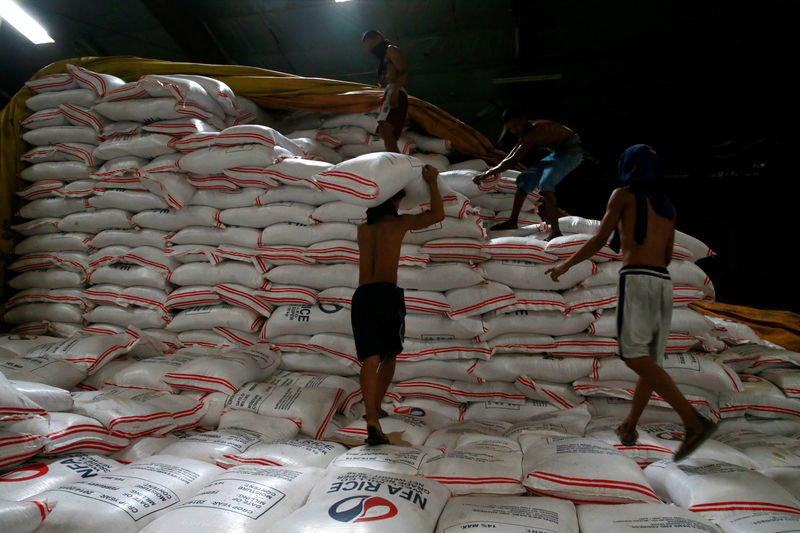© Reuters. Aerial photo shows farmers planting corn in the Kunjang rice fields, Kediri, East Java province, Indonesia, April 10, 2023, in this photo taken by Antara Foto. Antara Foto/Muhammad Mada/via REUTERS/File Photo
By Bernadette Christina and Dewi Kurniawati
JAKARTA (Reuters) – Indonesian farmer Wardiyono typically starts planting his small rice field in November but this season he began only in January, when rains finally arrived after months of drought caused by an especially strong El Nino weather phenomenon.
Three weeks on, he worries as rains have not been enough for the thirsty crop.
“Normally it rains daily in January. This year, it is different,” Wardiyono, 58, said by phone from Java’s Klaten regency south of the city of Surakarta. Wardiyono, who has one name like many Indonesians, said some days it was completely dry and for several days is has been just short spells of rain.
The planting delays and lack of rain Wardiyono is experiencing point to the likelihood of a worse-than-expected rice harvest and higher imports in 2024 in the world’s fourth-largest consumer of the staple. The Indonesian government is expecting the usual March-April peak harvest to be delayed by a month because of the below normal precipitation in Java, the country’s key rice growing region.
Lower Indonesian rice output may tighten supplies at a time prices are already near their highest since 2008 amid lower output in top exporters Thailand, Vietnam and India.
The London-based International Grains Council forecasts another decline in Indonesian rice output this year after El Nino curtailed the 2023 harvest, IGC analyst Peter Clubb said.
“El Nino has had quite a sizeable impact on Indonesia, leading to much reduced rainfall. This will likely see Indonesia’s imports remain above average in 2024,” he said.
Indonesia’s initial forecast for 32 million metric tons of rice output in 2024 has been undercut by predictions that rice output in January and February is expected to drop 46% from a year ago to 2.25 million tons.
Typically, planting for Indonesia’s main rice crop begins with the start of the wet season in October, with harvesting in February-April. The country produces two rice crops, with the harvest during the October-April wet season accounting for 55% of annual output.
Signs of the expected 2024 decline are apparent with the farm ministry reporting the area planted with rice in the fourth quarter of 2023 dropped to 2.91 million hectares (7.2 million acres), below the target of 3.53 million hectares (8.7 million acres).
About 35% of Indonesia’s 7.46 million hectares (18.43 million acres) of rice-growing areas depend on rain for irrigation, said Zulharman Djusman, the head of the farmers and fishermen association KTNA.
IMPORTS
Lower output would mean higher imports and Indonesia has already approved 2 million tons in 2024, a quarter of which is expected to arrive by March, officials said. In 2023, it imported 3.06 million tons of rice, a near-record.
That should translate into higher costs for Indonesian consumers as rice prices in Thailand, the world’s second-largest exporter, and Vietnam, the third-largest, have been rising since late 2023 after a brief respite amid dryness in key supplying countries.
Indonesian rice has already been gaining, averaging 14,763 rupiah ($0.9356) per kg in January, about 15.6% higher than a year ago.
A government handout scheme launched last year providing 10 kg of rice monthly to 22 million lower-income households, has helped eased some of the pressure, although lower-middle class households are not covered.
In the West Java regency of Indramayu, many farmers who planted seedlings in November are still waiting for rain and scrambling to borrow money for replanting, said Ayip Said Abdullah of the People’s Coalition for Food Sovereignty, a farmers advocacy group.
“They have spent money to sow rice seedlings, which didn’t grow,” Ayip said.
($1 = 15,780.0000 rupiah)
Read the full article here

